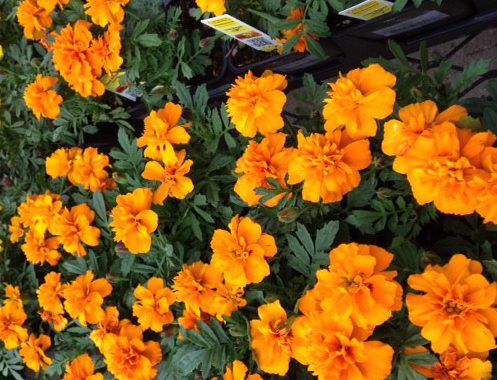
by Julie McConnell | Mar 10, 2015
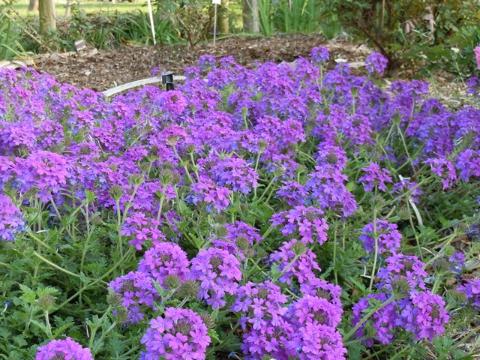
Verbena in full bloom. Image Credit: David W. Marshall, UF / IFAS
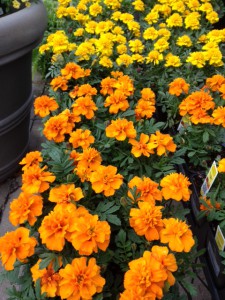
Marigold
As the weather warms and we approach the last expected frost date, it’s time to start planning our warm season annuals.
Annuals are plants that complete their life cycle in one season. In North Florida, we recognize two annual color seasons: Winter annuals (cool season) and Summer annuals (warm season).
Warm season annuals generally cannot tolerate freezing temperatures and perform best during the long, hot days of spring and summer. In our climate we have many choices for our warm season or summer color beds.
It is an extremely important part of the planning process to determine if the site is shaded, part sun, or full sun. If it is part sun, note whether plants will receive direct sunlight in the morning or afternoon and how many hours of sunlight are expected. Check water sources for the site. Different plants have different water needs, so you would not want to install plants with high water needs in a site with no irrigation or limited access to water.
Another factor to consider in coastal areas is the possibility of salt spray or introduction through water sources. Some plants can tolerate salt and others are very sensitive. If it is likely that plants may be exposed to salt, choose plants with a medium to high salt tolerance level.
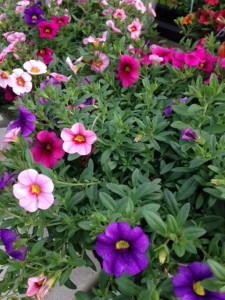
Calibrachoa
After you have assessed your site and determined what conditions will affect your plants, start with your plant selection.
Remember to group plants with similar needs together so that maintenance will be simpler and your plants will have the greatest opportunity to perform at their best. Most annuals will have some fertilizer needs due to their short life cycle. Be sure to amend the soil and provide slow release fertilizer throughout the growing season at the rate needed by your chosen plants. Do not apply fertilizer to plants that are suffering from drought stress, insect infestation, or disease infection.
When selecting plants from a garden center, look for healthy plants with well-developed root systems. If you pull the plant out of the pot you should be able to see bright white roots that are holding the soil together to the shape of the pot. If the root ball falls apart,the plant is not fully rooted and may struggle to get established. Look for disease, weed, and insect free plants so that you do not introduce a problem into your landscape.
To learn more about see Gardening with Annuals in Florida.
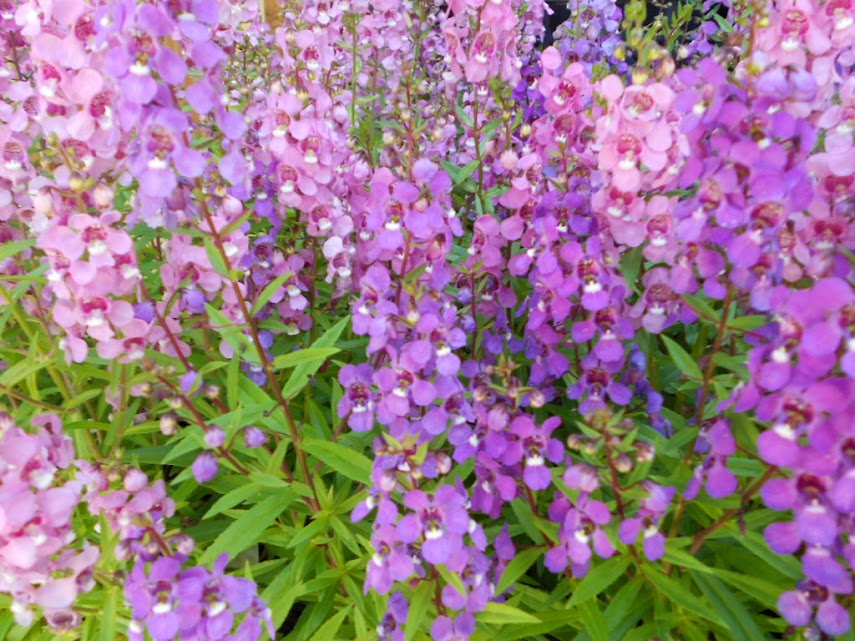
Agelonia
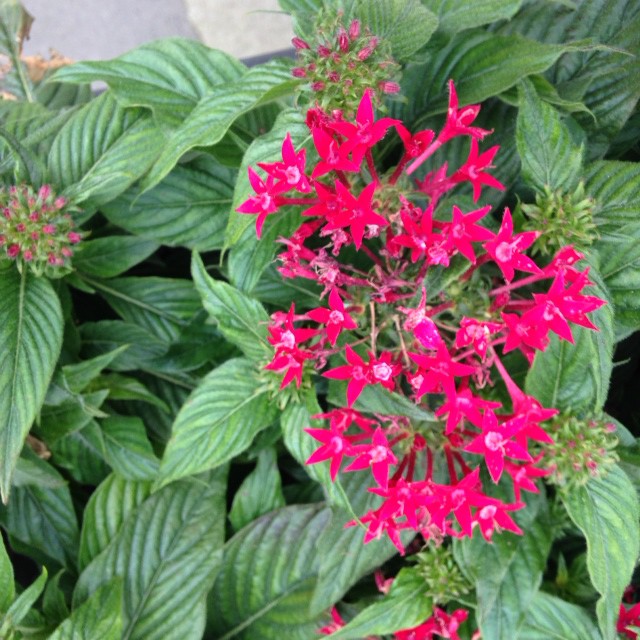
Pentas
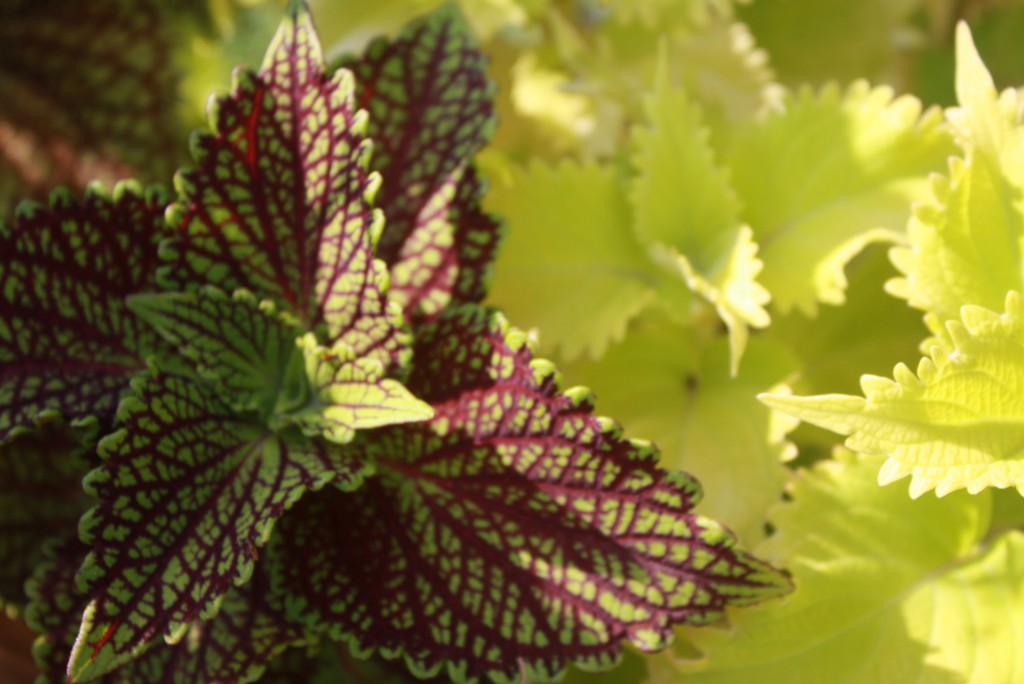
Coleus
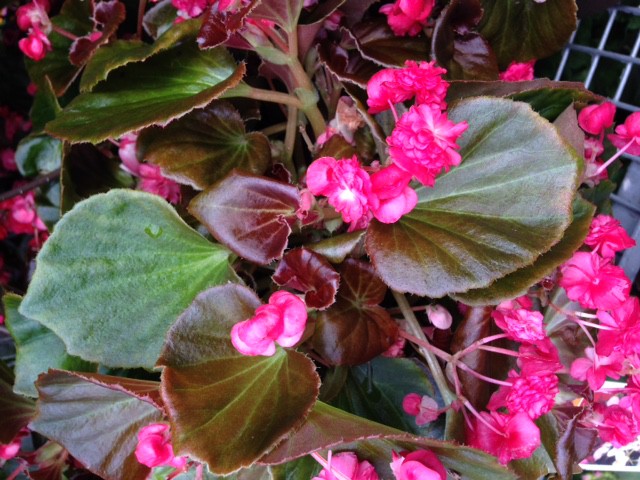
Begonia
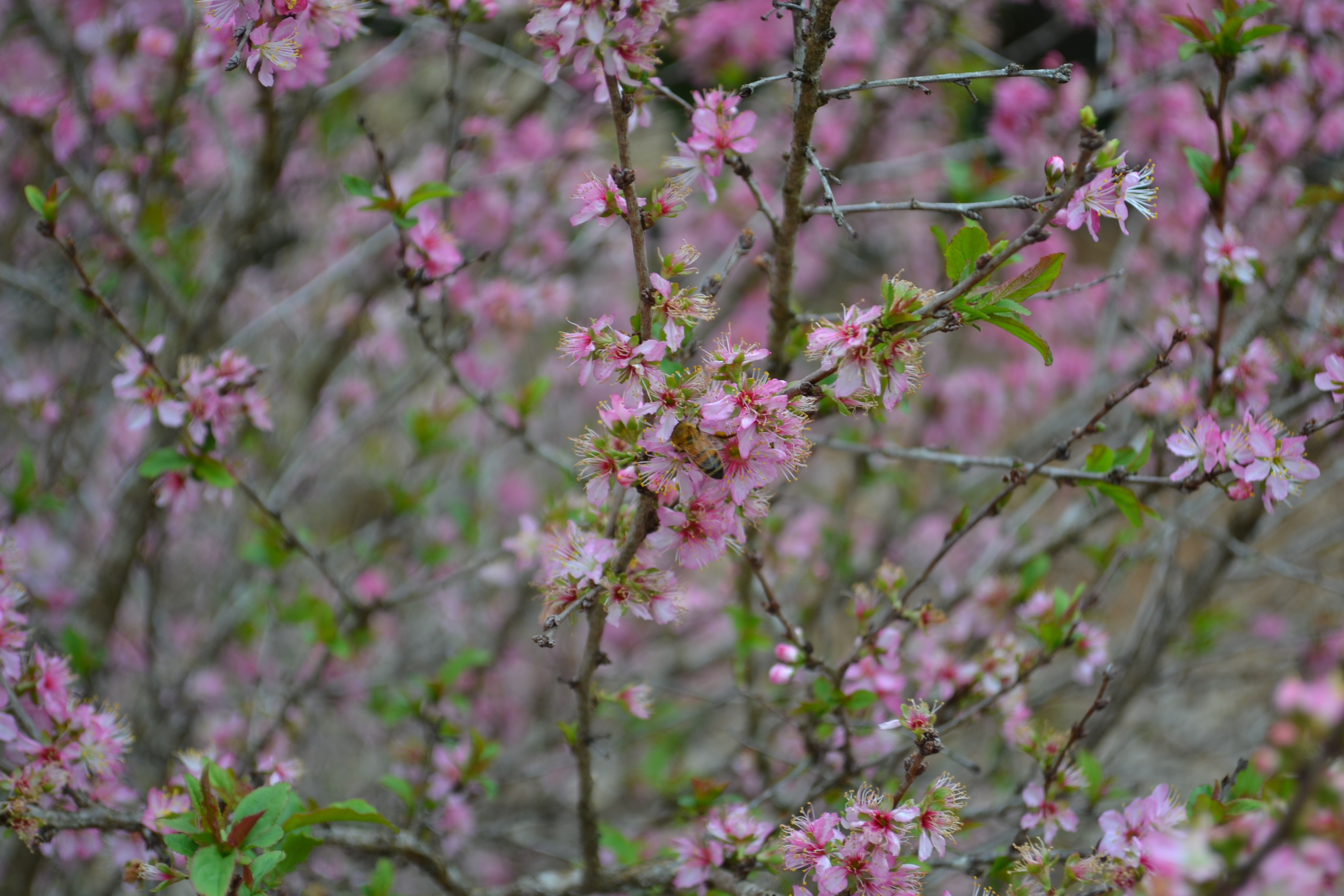
by Beth Bolles | Mar 10, 2015
Although we are not able to grow edible cherry trees in more southern climates, there are a few ornamental relatives of the cherry that are worth adding to the landscape. The Bush cherry, Prunus jacquemontii, is an attractive deciduous shrub that is a highlight with pink blooms in late winter. Flowers provide an early nectar source to bees.
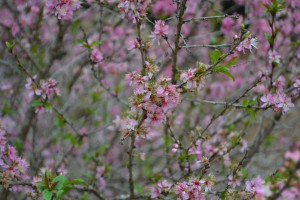
Bees are actively visiting flowers.
Plant the bush cherry is an area that receives sunlight and allows for the rounded shrub to grow about 5 feet by 5 feet. Plants like well-drained soil but benefit from some moisture during the growing season. Small berries serve as a food source for wildlife and can be used in jellies and jams. Leaves turn yellow in the fall before dropping. Plants are generally low maintenance and certainly brighten winter days. 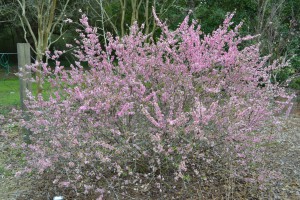
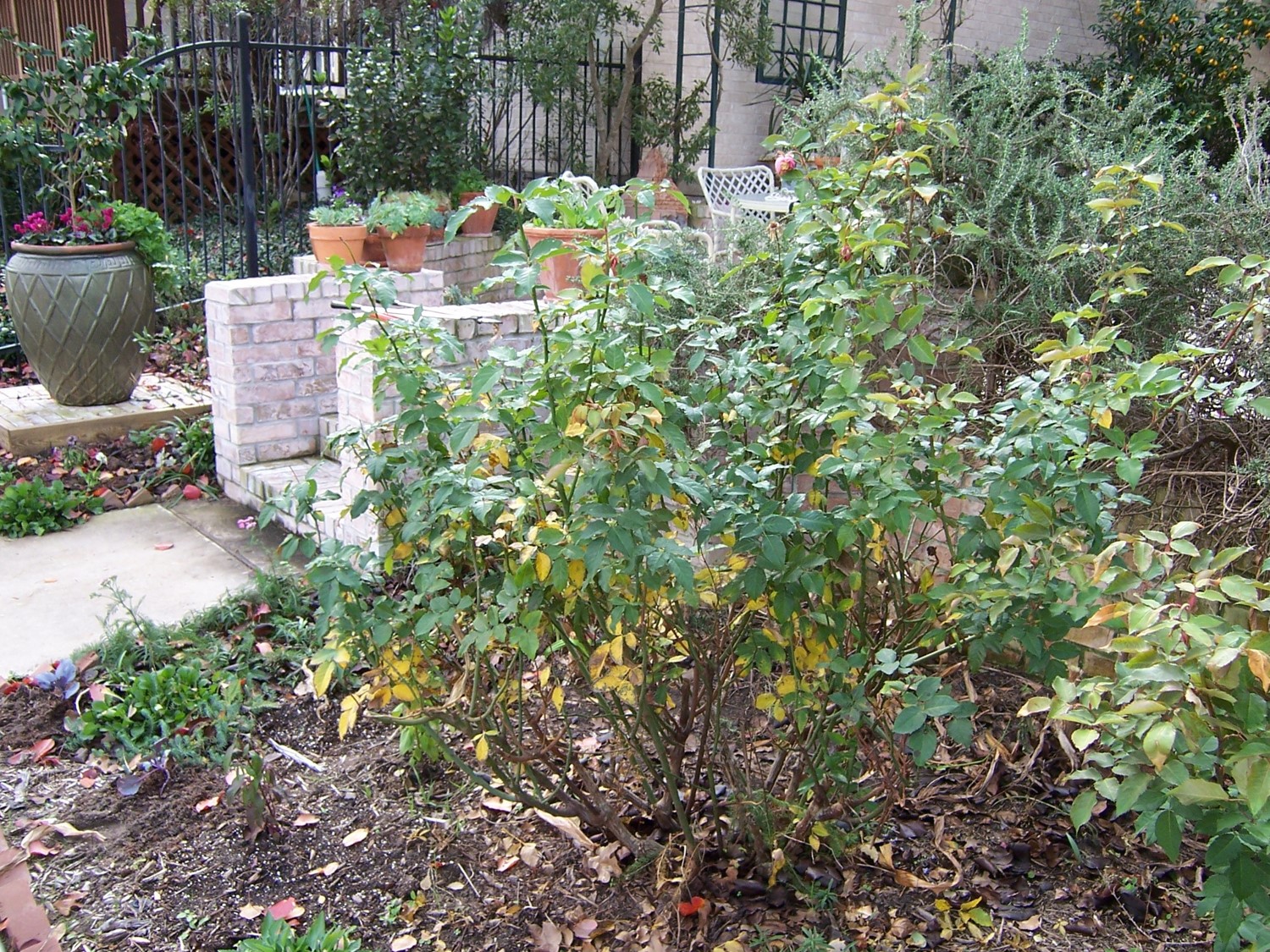
by Matthew Orwat | Mar 5, 2015
It is said that a picture is worth a thousand words. Please follow as a favorite shrub rose, Belinda’s Dream, is pruned.

Belinda’s Dream Rose – Before pruning, with dense thick growth. Time to open this plant up !

Start pruning by removing dead and diseased wood. Next remove crossing or rubbing branches, unproductive old growth and weak spindly growth
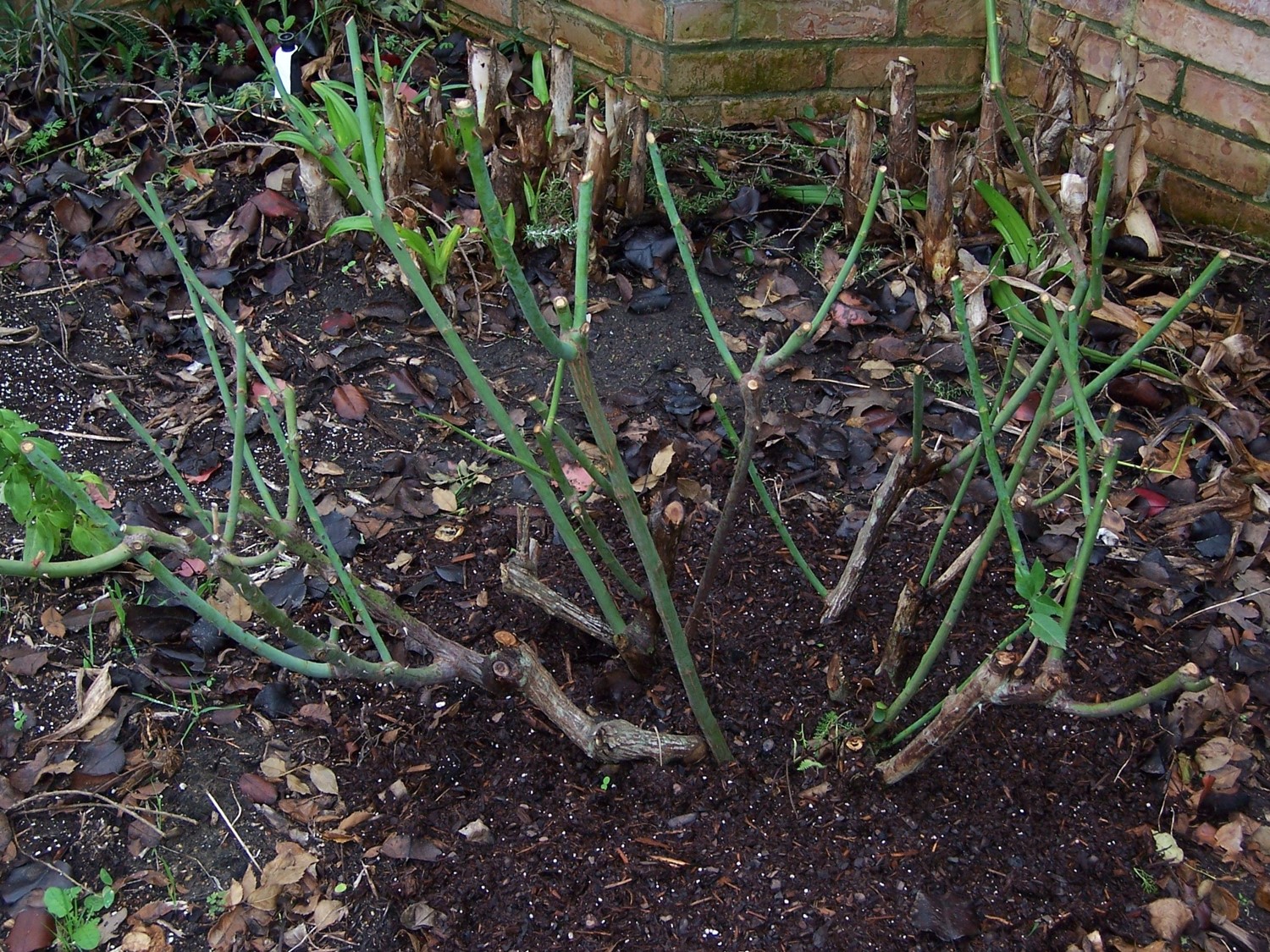
Shorten remaining growth by about half and look ! Your rose is pruned and ready to bear large flowers on long stems for another season !
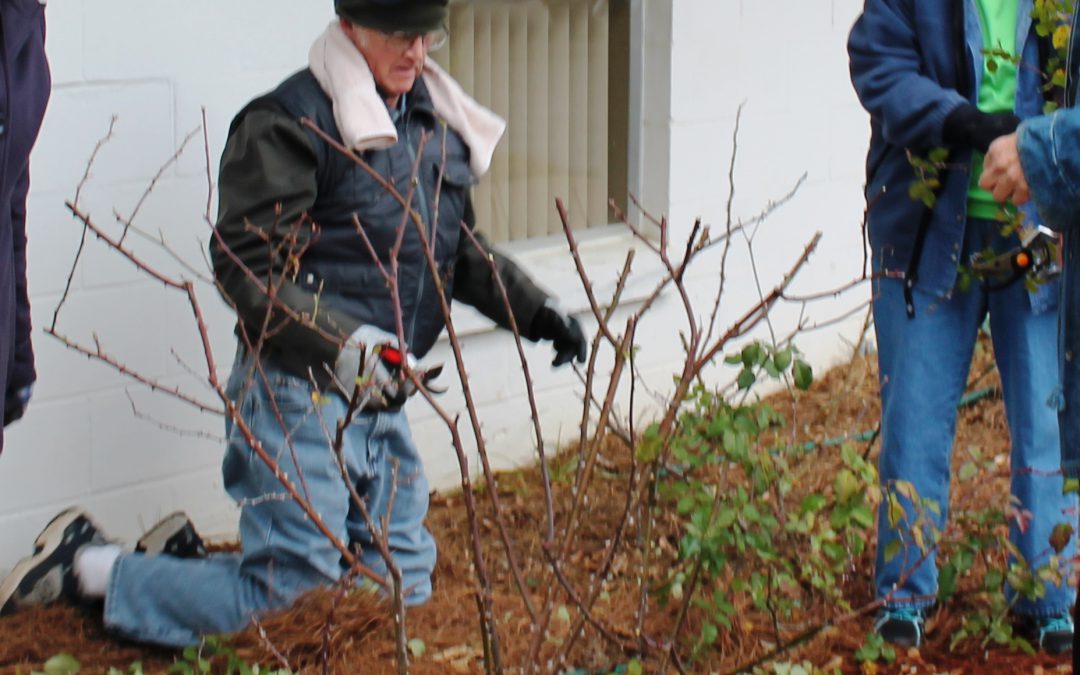
by Matthew Orwat | Mar 3, 2015
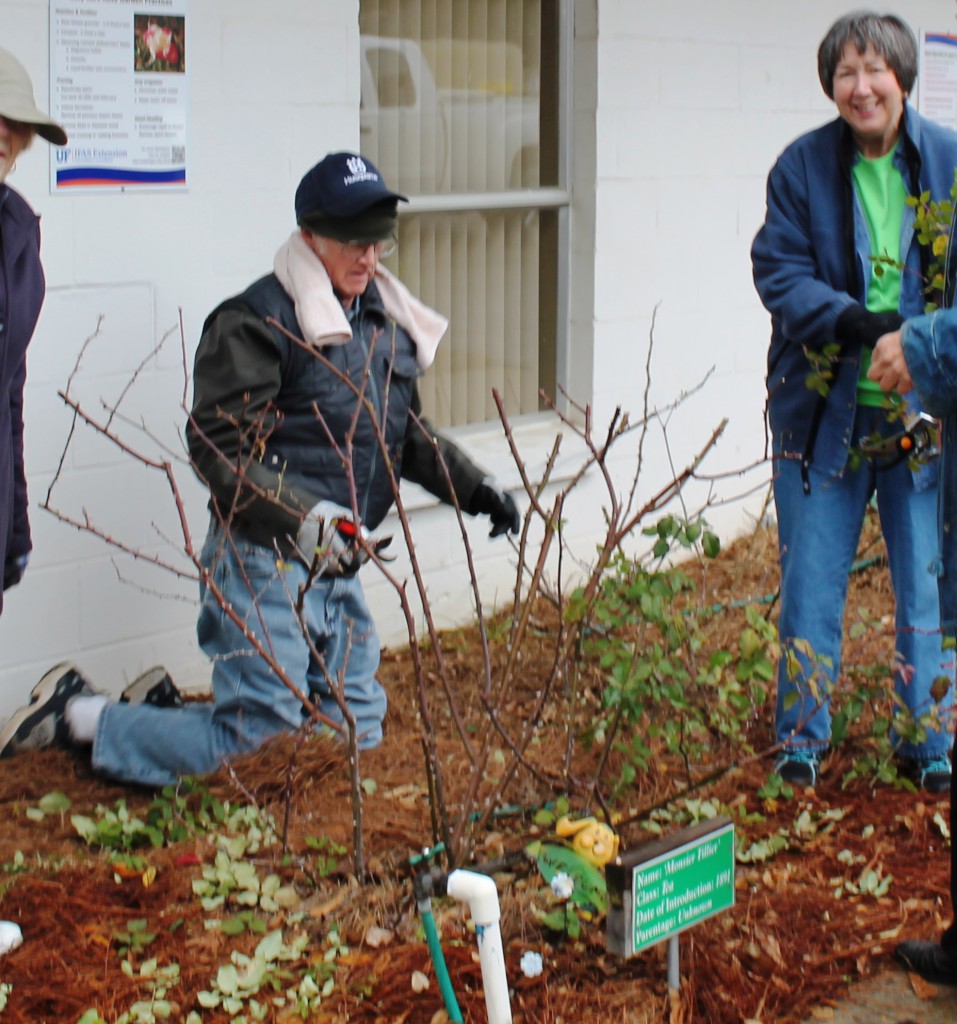
The process of pruning roses. Image Credit Matthew Orwat
Many rose enthusiasts ask every season? When do I prune my roses? The general recommendation is February 15th. If that recommendation is followed it’s usually not harmful, though climate can be very different from the coast to the state line . Therefore, my typical answer is to advise gardeners to prune roses when the Azaleas are in bloom. Typically, Azaleas are in full bloom or have finished blooming by the beginning of March. In many areas of the Florida Panhandle this year, they have not started due to late season freezes.
March 1st it is time to prune repeat blooming roses regardless of the condition of the Azaleas, so that gardeners will enjoy a few spring bloom cycles before the heat sets in.
When pruning roses there are several factors that need to be considered. First is the type. Is the rose a Hybrid Tea, Floribunda, Old Garden Rose, Shrub or Climber? Is it once blooming or repeat blooming? Once blooming roses and many repeat blooming climbers perform best if pruned after the spring display. This ensures the largest amount of bloom possible.
Hybrid Teas, Floribundas and their ilk are usually pruned back at least by half, keeping the strongest 4-8 canes and removing old, diseased, damage or non productive wood near the base or juncture of a large cane.
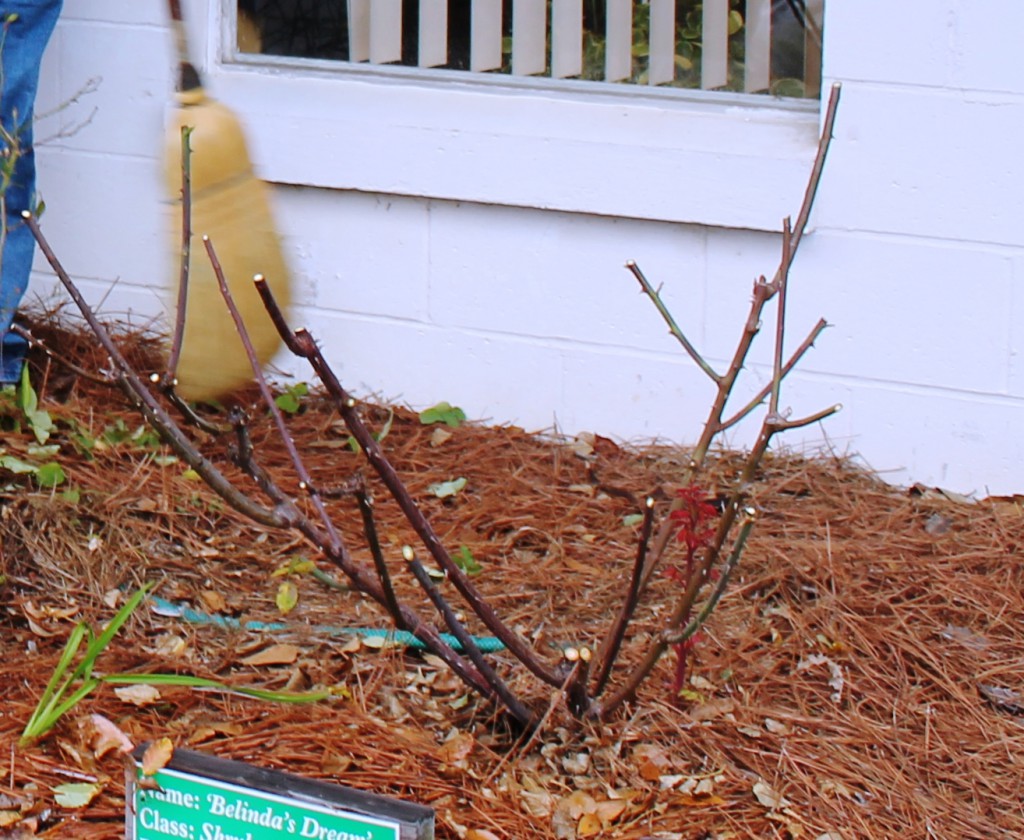
Typical “light” pruning of a Hybrid Tea or Floribunda. Image Credit Matthew Orwat
Old garden roses are seldom pruned hard. The best method in pruning old garden roses is to remove dead, old or unproductive wood, and eliminate crossing branches and excessive inward growth. This opens up the plant and allows for increased airflow, which reduces disease incidence. Once the plant has been “opened up” it may be pruned back by 1/3 to 1/2. Pruning back Old Garden Roses by 1/3 to 1/2 is not necessary but is often done for space considerations.
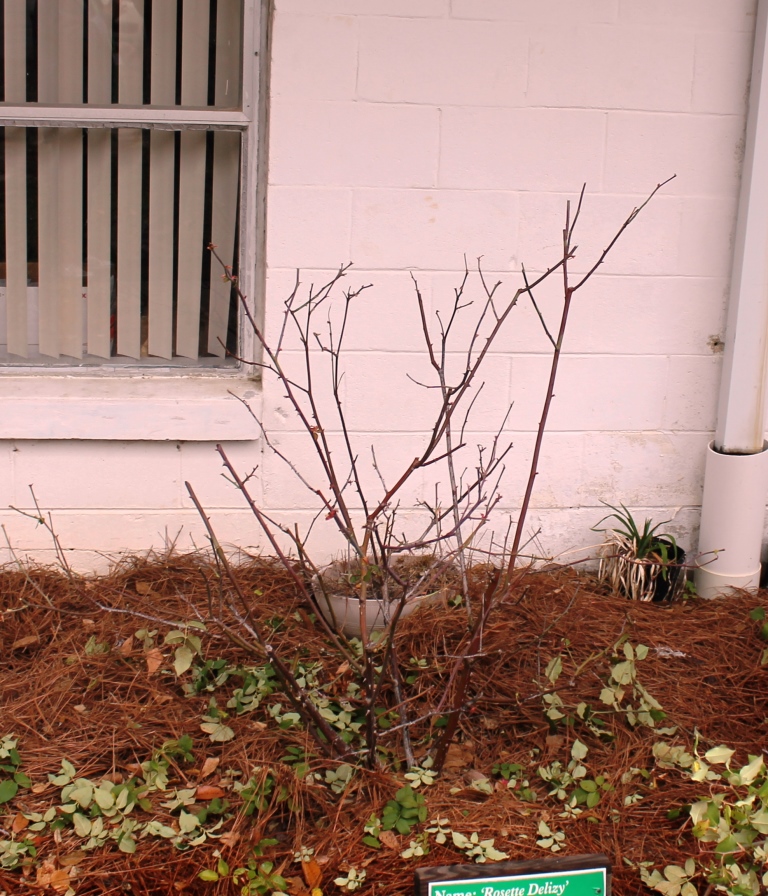
A lightly pruned old garden rose. Image Credit Matthew Orwat
Many Shrub Roses, such as Knockout, and various Old Garden Roses are trimmed several times a year with hedge trimmers. This is often the only pruning done except for the annual removal of dead or non-productive wood.
Additionally, roses benefit from the removal and disposal of any remaining leaves after the completion of late winter pruning. This helps reduce disease carry over from the previous year and induces a short dormant period.
Along with pruning it is often advantageous to spray with a dormant fungicide spray, such as Lime-Sulfur. This can be found at farm supply stores or nurseries and must be applied according to label directions. It is especially important to cover the skin when using this product, since the sulfur component is caustic to skin in its concentrated form. It will also burn any new growth, so it can only be used during the dormant season.
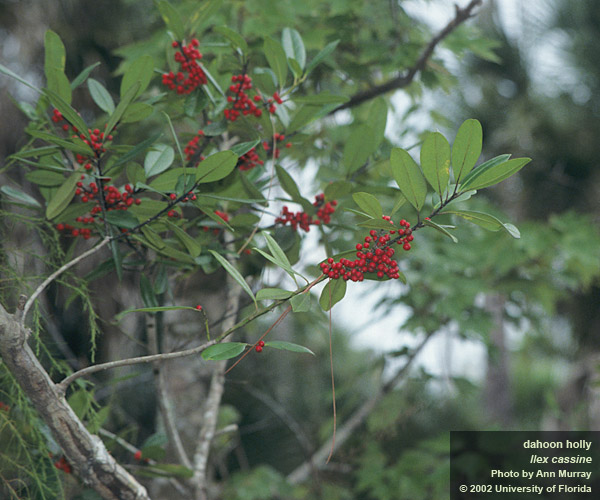
by Mary Salinas | Mar 2, 2015
The sight and sound of birds in the yard reconnects us to the wonder and beauty of nature. Providing food, water and shelter can bring the joy of our feathered friends into outdoor spaces.
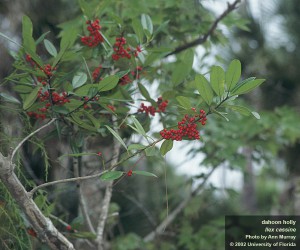 Leave behind the standard palette of trees and shrubs that characterize many urban landscapes. Rather, choose trees and shrubs that provide food and shelter to birds. Here are just a few to consider:
Leave behind the standard palette of trees and shrubs that characterize many urban landscapes. Rather, choose trees and shrubs that provide food and shelter to birds. Here are just a few to consider:
Hawthorns – The thorniness of these trees provide excellent protection for birds nesting in their strong branches. In spring, their abundance of blooms attracts a wide variety of pollinators. The size of the fruits vary with different species of hawthorn. For instance, the yellow haw (Crataegus flava) has large fruit suitable for larger birds, while the littlehip hawthorn (C. spathulata) produces small fruit for even the smallest of the fruit-eating birds.
Hollies – When most other fruiting trees are bare of fruit in winter, hollies provide abundant berries in the fall and hold them well into winter to provide food for migratory and resident songbirds. Dahoon holly is a versatile tree for many landscape settings, from dry, sunny locations to moist woodlands. It is even moderately salt tolerant.
Viburnums – This family of large shrubs are adaptable to a wide range of landscape situations. The dense foliage and branching provide excellent nesting opportunities for birds. Flowers bloom in spring to summer and are followed by purple fruits in late summer and fall that are enjoyed by many birds.

Songbird at a tube feeder. Photo by Thomas Wright, UF/IFAS.
Do you want to attract birds right away? While you wait for new plantings to mature and provide food, put out a few bird feeders. There are a wide variety from which to choose. Tube, hopper and platform feeders can be filled with a variety of seed mixes. Suet feeders are constructed of a heavy gauge wire and hold a solid cake of animal fat with seeds, nuts, grains or fruits. Nectar feeders cater to hummingbirds. Fruit feeders are made to hold large pieces of fruit, like apples and oranges. The type of feeder and food you offer will determine the species or type of birds you will attract.
Don’t forget a bird bath. Birds need a clean water source, so remember to rinse it on a regular basis.
Think twice about attracting birds, though, if you let your cats run free. Cats are dangerous to our bird populations. But if they are strictly housecats, they will love to watch the birds through the windows or porch screens as much or even more than you will.
For more information:
U.S. Fish & Wildlife Service: Backyard Bird Feeding
Attracting Backyard Birds: Bird Feeder Selection





















